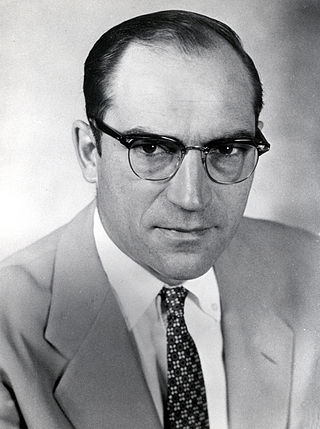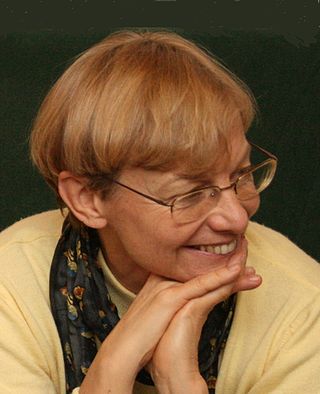External links
| International | |
|---|---|
| National | |
| Academics | |
| Other | |
| | This article about an American scientist in academia is a stub. You can help Wikipedia by expanding it. |
Michael Manga | |
|---|---|
| Born | July 22, 1968 |
| Alma mater | McGill University; Harvard University |
| Awards | MacArthur Fellow |
| Scientific career | |
| Fields | Earth and Planetary Sciences |
| Institutions | University of California, Berkeley |
| Patrons | National Science Foundation |
| Website | http://seismo.berkeley.edu/~manga/ |
Michael Manga (born July 22, 1968) [1] is a Canadian-American geoscientist who is currently a professor at the University of California, Berkeley.
Born in Hamilton, Ontario, Manga grew up in Ottawa. [2] [1] His father is a South African immigrant of Indian descent, and his mother is of German and Polish descent. [3] [4] He has a B.S. in geophysics from McGill University (1990), S.M. in engineering sciences from Harvard University (1992), and Ph.D. in Earth and planetary sciences (1994) from Harvard. [5] [6]
In 1994 he was selected as a Miller Fellow at the University of California Berkeley for a two-year term. Following his move to the University of Oregon he returned to Berkeley. In 2008-2009 he was named a Miller Research Professor. He served on the executive committee of the Miller Institute between 2009 and 2016.
In 2003, he made Popular Science magazines second annual PopSci Brilliant 10 list [7] and won the Geological Society of America's Young Scientist Award (Donath Medal). [8]
A 2005 MacArthur Fellow, he won an award from the National Science Foundation (NSF) in support of his studies of geological fluid mechanics and magma flow prior to eruptions.
In November 2005, shortly after receiving the MacArthur, Manga made another list, the People's "Sexiest Man Alive" issue in which he admits that he agreed to be included because, "I wanted to get information out to people who wouldn't normally hear or see anything about science." [9]
He was elected to the National Academy of Sciences in 2018.
His research interests include planetary science, fluid mechanics, hydrology, geodynamics, and physical volcanology.
Paul Felix Hoffman, FRSC, OC is a Canadian geologist and Sturgis Hooper Professor Emeritus of Geology at Harvard University. He specializes in the Precambrian era and is widely known for his research on Snowball Earth glaciation in the Neoproterozoic era particularly through his research on sedimentary rocks of Namibia.
Daniel Paul Schrag is the Sturgis Hooper Professor of Geology, Professor of Environmental Science and Engineering at Harvard University and Director of the Harvard University Center for the Environment. He also co-directs the Science, Technology and Public Policy Program at the Belfer Center for Science and International Affairs at the Harvard University Harvard Kennedy School. He is also an external professor at the Santa Fe Institute.

Luna Bergere Leopold was a leading U.S. geomorphologist and hydrologist, and son of Aldo Leopold. He received a B.S. in civil engineering from the University of Wisconsin in 1936; an M.S. in physics-meteorology from the University of California, Los Angeles in 1944; and a Ph.D. in geology from Harvard University in 1950.
James Albert Harder, Ph.D., was a professor of civil and hydraulic engineering at the University of California, Berkeley. He was a professor emeritus there. Harder also had interest in ufology.
Ray Jayawardhana is the Harold Tanner Dean of the Cornell University College of Arts and Sciences and a Professor of Astronomy at Cornell University, effective September 1, 2018. He was formerly Dean of Science and a Professor of physics & astronomy at York University. Prior to that, he was a Professor of Astronomy & Astrophysics at the University of Toronto, and an Assistant Professor of Astronomy at the University of Michigan. An award-winning science writer, his primary research areas include the formation and early evolution of stars, brown dwarfs and planets.. His current research focuses on characterizing exoplanets using telescopes on the ground and in space.

S. Shankar Sastry is the Founding Chancellor of the Plaksha University, Mohali and a former Dean of Engineering at University of California, Berkeley.
James Robert Rice is an American engineer, scientist, geophysicist, and Mallinckrodt Professor of Engineering Sciences and Geophysics at the Harvard John A. Paulson School of Engineering and Applied Sciences,.

Sean Carl Solomon is the director of the Lamont–Doherty Earth Observatory of Columbia University, where he is also the William B. Ransford Professor of Earth and Planetary Science. Before moving to Columbia in 2012, he was the director of the Department of Terrestrial Magnetism at the Carnegie Institute in Washington, D.C. His research area is in geophysics, including the fields of planetary geology, seismology, marine geophysics, and geodynamics. Solomon is the principal investigator on the NASA MESSENGER mission to Mercury. He is also a team member on the Gravity Recovery and Interior Laboratory mission and the Plume-Lithosphere Undersea Melt Experiment (PLUME).
James C. McWilliams is a professor at the UCLA Institute of Geophysics and Planetary Physics and Department of Atmospheric and Oceanic Sciences.

Donald James DePaolo is an American professor of geochemistry in the department of earth and planetary science at the University of California, Berkeley and associate laboratory director for energy and environmental sciences at the Lawrence Berkeley National Laboratory.
Ali Javey is a professor of electrical engineering and computer sciences at the University of California, Berkeley, a senior faculty scientist at the Lawrence Berkeley National Laboratory, and co-director of the Bay Area Photovoltaic Consortium and the Berkeley Sensor and Actuator Center. His research is focused on materials and device innovation for technological applications, particularly photovoltaics, wearable sensors, nanoelectronics, and programmable materials.
Leigh "Wiki" H. Royden is an American Geologist.

Barbara A. Romanowicz is a French geophysicist and an expert on imaging the earth's interior.
Laurel G. Larsen is an Associate professor of Earth Systems Science for the Department of Geography and Civil and Environmental Engineering at the University of California, Berkeley where she also heads the Environmental Systems Dynamics Laboratory. Her areas of expertise include hydroecology, geomorphology, complex systems, and environmental modeling.
Kathleen R. Johnson is an American member of the Grand Traverse Band of Ottawa and Chippewa Indians who is a geologist and paleoclimatologist. Her research focuses on reconstructing past climate change with speleothems, on active cave monitoring to understand the interaction of climate with speleotherm geochemistry, and analyzes climate and paleoclimate data to investigate natural climate variability. She earned a PhD from the University of California Berkeley in 2004 and is an associate professor at the University of California Irvine.
Susan Marian Ellis is a geophysicist based in New Zealand, who specialises in modelling the geodynamics of the Earth's crust deformation, at different scales. Ellis is a principal scientist at GNS Science and her main interests are in subduction, seismology, tectonics, crust and petrology. Ellis's current work focuses on the influence of faulting on stresses in the crust, and how this is related to geological hazard and the tectonic settings in New Zealand.
Demian (Michael) Saffer is an American geophysicist based at The University of Texas at Austin where he is director of the University of Texas Institute for Geophysics and professor at the Department of Geological Sciences of the Jackson School of Geosciences. He studies the role of fluids and friction in the mechanics of subduction megathrust earthquakes.